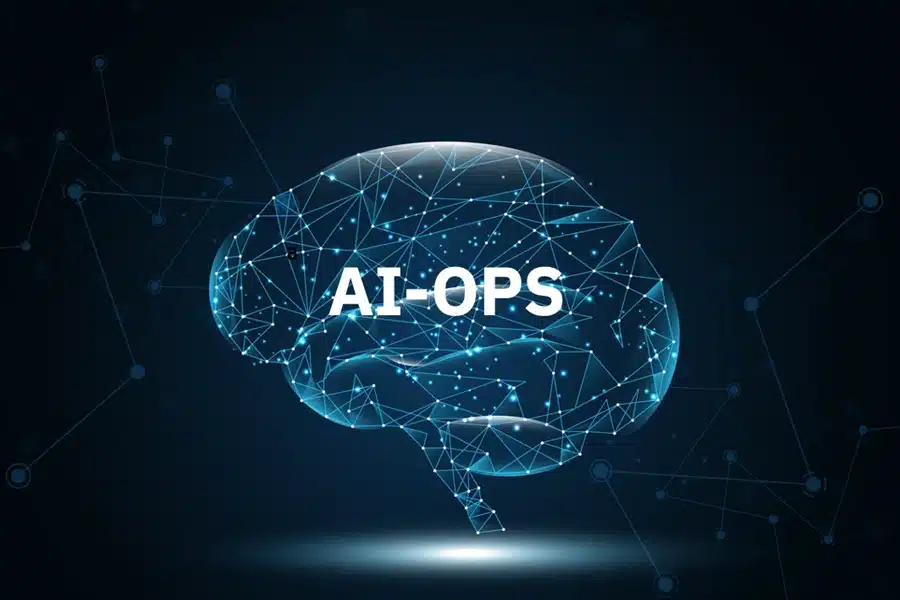Related Resources
Cybersecurity has always been a race: defenders build barriers, attackers find ways around them, and the cycle repeats. But in today’s hyper-connected world, this race has escalated. Enterprises are now defending sprawling digital ecosystems — cloud infrastructures, IoT devices, remote workforces, and AI-driven applications — against increasingly sophisticated threats.
The traditional cybersecurity stack, built on firewalls, intrusion detection systems, and rule-based monitoring, can’t keep pace. Attackers use automation, AI, and advanced tactics that evolve faster than static defenses. Organizations need a smarter, more adaptive security approach.
That’s where artificial intelligence comes in. AI is becoming the backbone of the new cybersecurity stack, powering advanced threat detection, proactive risk management, and real-time response.
Why Traditional Cybersecurity Falls Short
For decades, organizations relied on a layered defense approach: firewalls, antivirus software, intrusion detection, and manual incident response. While these tools remain important, they are insufficient against modern threats for several reasons:
Scale of Data:
Enterprises generate terabytes of logs daily across cloud, endpoints, and networks. Human analysts cannot manually review it all.
Sophistication of Threats:
Advanced persistent threats (APTs), polymorphic malware, and zero-day exploits often bypass static rule-based systems.
Speed of Attacks:
Attacks unfold in seconds or minutes, while traditional detection may take hours or days.
Skills Shortage:
There is a global shortage of cybersecurity professionals, leaving gaps in monitoring and response.
In this environment, security must shift from reactive to predictive — and AI makes that possible.
The Role of AI in the New Cybersecurity Stack
AI brings adaptability and intelligence to cybersecurity. Instead of depending solely on signatures or static rules, AI systems learn from patterns, adapt to evolving threats, and act autonomously.
Here’s how AI strengthens the cybersecurity stack:
Threat Detection
AI-powered systems use machine learning to analyze massive volumes of data and detect anomalies that signal attacks. For example, an AI model can flag unusual login activity — like simultaneous logins from two continents — without relying on pre-defined rules.
Risk Assessment
AI continuously evaluates vulnerabilities across infrastructure, prioritizing them based on likelihood of exploitation and potential impact. This ensures patching resources are directed to the most critical risks.
Automated Response
When threats are detected, AI can trigger automatic responses: isolating compromised devices, blocking malicious IPs, or shutting down vulnerable services, all in real time.
Predictive Intelligence
By analyzing global threat intelligence feeds, AI forecasts emerging attack patterns. This allows enterprises to harden defenses before attacks materialize.
Fraud and Insider Threat Detection
AI monitors user behavior to identify anomalies that suggest insider misuse or fraud — something traditional tools often miss.
Together, these capabilities turn cybersecurity from a reactive posture into an intelligent, proactive defense strategy.
Key AI Technologies Powering Cybersecurity
AI in cybersecurity isn’t a single tool — it’s a stack of technologies working together.
Machine Learning (ML)
ML algorithms learn from historical attack data to identify new, unseen threats. Supervised learning models classify known threats, while unsupervised learning detects anomalies.
Natural Language Processing (NLP)
NLP processes unstructured data from threat reports, security bulletins, or even dark web chatter, helping analysts stay ahead of new vulnerabilities.
Deep Learning
Deep learning models analyze complex signals, such as malware code or network traffic patterns, with higher accuracy than traditional methods.
Behavioral Analytics
AI tracks baseline user and device behavior. Deviations from this baseline — like unusual data transfers — are flagged as potential risks.
Automated Orchestration
AI integrates with security orchestration, automation, and response (SOAR) platforms, enabling faster, coordinated responses across the security ecosystem.
Applications of AI in Threat Detection and Risk Management
AI is already embedded in critical areas of cybersecurity:
Endpoint Security
AI-powered antivirus and endpoint detection tools identify malware variants by analyzing behavior, rather than relying solely on signatures.
Cloud Security
AI analyzes cloud activity logs to detect misconfigurations, unusual data flows, or unauthorized access attempts.
Network Security
By monitoring network traffic in real time, AI can spot command-and-control communication or data exfiltration attempts.
Identity and Access Management
AI strengthens authentication by analyzing login patterns, device fingerprints, and behavioral signals to detect account takeovers.
Fraud Prevention
Financial institutions use AI to detect anomalies in transaction data, flagging fraudulent activity within milliseconds.
Insider Threat Detection
AI evaluates employee behavior patterns to catch early warning signs of misuse, negligence, or sabotage.
Benefits of AI in the Cybersecurity Stack
The adoption of AI delivers significant benefits for enterprises.
Speed and Scale
AI processes terabytes of data in real time, spotting threats far faster than human analysts.
Accuracy
Machine learning reduces false positives by distinguishing between benign anomalies and real threats.
Proactive Risk Management
AI predicts which vulnerabilities are most likely to be exploited, enabling smarter prioritization of security resources.
Cost Savings
Automating detection and response reduces the workload on human teams, helping close the cybersecurity skills gap.
Continuous Learning
AI models adapt to new attack patterns, ensuring defenses evolve alongside threats.
Challenges and Risks of AI in Cybersecurity
While AI strengthens security, it also introduces challenges:
Data Quality
AI is only as good as the data it learns from. Poor data quality can lead to blind spots or misclassifications.
Adversarial Attacks
Attackers can attempt to manipulate AI models through adversarial inputs — crafted data designed to fool detection systems.
Over-Reliance on Automation
AI should augment, not replace, human judgment. Blind reliance can lead to missed context or inappropriate automated responses.
Cost and Integration
Deploying AI requires investment in infrastructure, training, and integration with existing tools.
Ethical and Privacy Concerns
AI-powered monitoring raises questions about surveillance and user privacy, especially in sensitive industries.
Building the New AI-Driven Cybersecurity Stack
Enterprises adopting AI for security should think holistically. Here’s what a modern stack looks like:
AI-Enhanced SIEM: Security information and event management systems powered by AI for real-time analysis.
AI-Based Endpoint Protection: Tools that detect malware and ransomware through behavior analysis.
SOAR with AI Integration: Automated orchestration and response for faster mitigation.
Threat Intelligence Platforms: AI-curated feeds that identify global attack trends.
User and Entity Behavior Analytics (UEBA): Monitoring users and devices for anomalous activity.
AI-Augmented Vulnerability Management: Prioritization of patches based on predictive risk models.
This layered, AI-empowered stack shifts enterprises from static defenses to adaptive, intelligence-driven security.
The Future of AI in Cybersecurity
As AI matures, its role in cybersecurity will expand even further.
Autonomous Defense
Future systems will autonomously detect, analyze, and neutralize threats at machine speed, with minimal human intervention.
Federated Learning
AI models will learn from distributed datasets across industries without compromising privacy, improving detection accuracy globally.
AI Against AI
As attackers deploy AI to craft more sophisticated attacks, defenders will use AI to counter them in real time, an arms race of algorithms.
Explainable AI
Greater transparency in AI decision-making will help security teams understand and trust automated insights.
Integration with Zero Trust Architectures
AI will become central to enforcing zero trust, continuously verifying identities and monitoring behavior.
Why Enterprises Must Act Now
Cyber threats are no longer hypothetical — they’re a constant reality. Ransomware attacks, data breaches, and nation-state cyber campaigns dominate headlines weekly. Enterprises that rely solely on traditional security stacks risk falling behind.
AI isn’t just an enhancement — it’s becoming the foundation of the new cybersecurity stack. Early adopters will enjoy stronger resilience, faster responses, and reduced risk exposure. Those who delay may find themselves at a permanent disadvantage in the cybersecurity arms race.
Smarter Defense for a Risk-Heavy World
The cybersecurity landscape has fundamentally changed. Static defenses can’t keep pace with dynamic, AI-driven threats. To stay secure, enterprises need an equally intelligent response.
By embedding AI into every layer of the cybersecurity stack — from endpoint to cloud to identity — organizations gain the ability to detect, predict, and respond to threats with unprecedented speed and accuracy. The challenges of data quality, cost, and adversarial tactics are real, but the benefits far outweigh the risks.
The new cybersecurity stack is adaptive, intelligent, and AI-powered. It represents not just an evolution of tools but a rethinking of strategy: security that learns, evolves, and defends at the speed of today’s threats.




